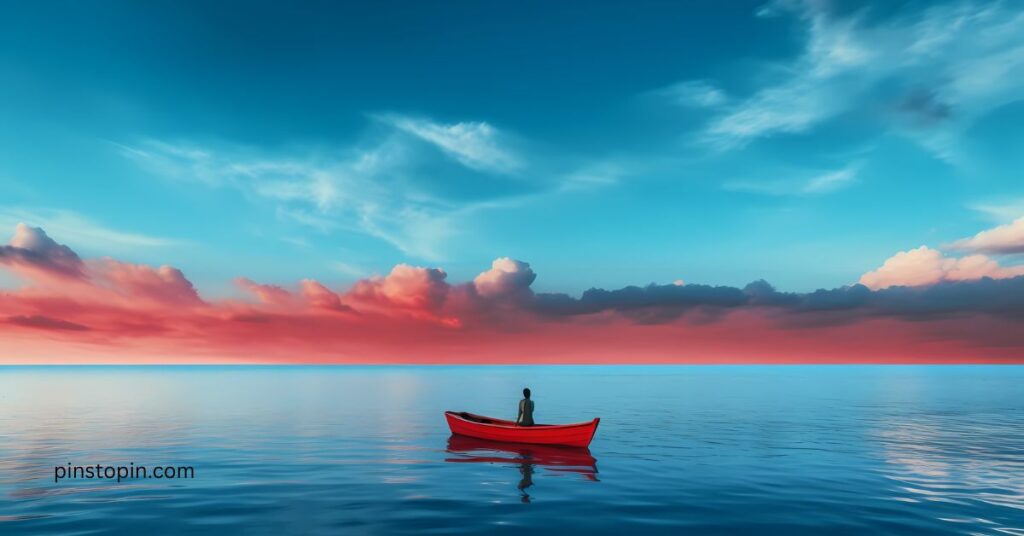In Finland, a land of shimmering lakes, winding rivers, and an almost endless coastline, there is a single word that captures an entire summertime experience: veneajelu. At first glance, it translates simply to “boat ride” or “boat trip,” but in truth, this Finnish term carries a much deeper meaning. It is about slowing down, embracing the rhythm of the water, and letting the gentle motion of the boat become a kind of meditation. A veneajelu is rarely about reaching a destination. It is about the journey itself — the wind on your face, the glint of sunlight on the water, and the quiet companionship of nature or loved ones.
Origins of Veneajelu in Finnish History
The roots of veneajelu lie in Finland’s long history of water travel. For centuries, boats were not a luxury but a necessity. They were used for fishing, transporting goods, visiting neighboring villages, and navigating the labyrinth of lakes and coastal islands. Over time, as roads and bridges reduced the dependence on water travel for survival, boats began to take on a more leisurely role. The functional necessity evolved into a cultural tradition, and the boat ride transformed into a cherished recreational activity. This shift from utility to leisure created the foundation for what veneajelu means today: an unhurried escape on the water, free from the demands of daily life.
Meaning and Usage
Although there are several Finnish words for traveling by boat, veneajelu specifically suggests a ride taken for pleasure. It carries with it a tone of relaxation, spontaneity, and enjoyment rather than urgency or obligation. You might say someone is going on a veneajelu on a sunny summer afternoon, perhaps without even knowing exactly where they will end up. The word is casual, familiar, and closely tied to summer, conjuring images of warm breezes, rippling water, and laughter shared with friends.
Cultural Significance in Finland
Finland is a nation blessed with over 180,000 lakes, countless rivers, and an intricate archipelago of islands. In such a landscape, water is not just a feature of the scenery; it is a way of life. A veneajelu is more than just a pastime — it is a reflection of Finnish values, combining a love of nature, an appreciation for tranquility, and the joy of shared experiences. It often becomes a bridge between generations, with grandparents teaching children how to handle a boat, or families reuniting each summer to explore familiar waterways. The veneajelu is woven into the fabric of Finnish summer, a seasonal ritual that signals the arrival of long days, warm nights, and time spent outdoors.
Seasonal Variations and Best Times for Veneajelu
While a veneajelu can be enjoyed in different seasons, summer is undoubtedly its golden period. In late spring, when the ice has melted and the first warm breezes arrive, early boat rides have a freshness that feels like waking from a long winter’s sleep. The shores are dotted with blooming wildflowers, and the water, though still cool, reflects the deep blue of the spring sky. Summer brings the height of the tradition, with endless daylight, comfortable temperatures, and a festive atmosphere that encourages people to be outside as much as possible. In early autumn, as the air turns crisp and the forests burst into fiery reds and golds, boat rides take on a quieter, more reflective tone. The waterways are less crowded, and the changing light lends a magical quality to the journey.
Popular Types of Boats Used for Veneajelu
The type of boat chosen for a veneajelu can vary greatly, each offering its own unique charm. Traditional wooden boats, often handcrafted and passed down through families, connect riders to Finland’s maritime heritage. Their creaking timbers and polished surfaces carry a sense of nostalgia and craftsmanship. Modern motorboats, on the other hand, allow for longer journeys and visits to distant islands, making them a favorite for families and groups of friends. For those seeking the slowest and most peaceful pace, a rowboat or canoe offers the chance to glide silently over the water, listening only to the sound of oars dipping in and out of the lake.
Veneajelu Etiquette
A veneajelu is not just an activity; it is also an unspoken agreement to respect the water and those who share it. Courtesy on the water is important in Finnish culture. Riders are expected to keep noise levels low in natural areas so as not to disturb wildlife, to navigate at safe speeds near swimmers or smaller boats, and to leave no trace of their presence by avoiding littering. These simple practices ensure that the waterways remain as beautiful and pristine as they have been for generations.
ALSO READ: Spiritual India Pilgrimage Tours for Divine Journeys
Top Veneajelu Destinations in Finland
There are countless places in Finland where one can enjoy a veneajelu, but certain locations have earned a special reputation. Lake Saimaa, the country’s largest lake, offers an almost endless network of islands, hidden bays, and calm waters, making it ideal for both short rides and extended trips. The Turku Archipelago, with its more than 20,000 islands, is a dream for explorers who enjoy weaving through narrow channels and discovering secluded beaches. Oulujärvi, often called the “sea of Kainuu,” impresses with its vast open stretches of water and rugged shoreline, providing a feeling of freedom and space that is unmatched.
The Role of Food and Drink on a Veneajelu
Food is an inseparable part of the veneajelu experience. Many rides include a picnic packed with rye bread sandwiches, fresh berries, and thermoses of strong Finnish coffee. Some boaters make stops on small islands to grill sausages or prepare simple meals over an open fire, turning the ride into a full-day outing. Sharing food and drink on the water strengthens the social aspect of the tradition, turning the trip into both a visual and culinary pleasure.
Photography and Wildlife Spotting
A veneajelu offers unparalleled opportunities for photography and wildlife observation. Early mornings and late evenings provide soft, golden light that reflects off the water like liquid gold. Birdwatchers may spot ospreys circling overhead or white-tailed eagles soaring in the distance. In Lake Saimaa, the lucky few may even catch sight of the rare and endangered Saimaa ringed seal, a species found nowhere else in the world. These moments remind riders that a veneajelu is not just about the human experience but about sharing space with the creatures that call these waters home.
Veneajelu and Finnish Summer Celebrations
During midsummer, or Juhannus, veneajelu takes on an even more festive spirit. Boats are decorated with birch branches, music drifts across the water, and laughter carries from one vessel to another. Families and friends gather not only to ride but also to swim, dance, and enjoy the never-setting sun. On these nights, the water becomes a stage for celebration, and every boat seems part of a larger, floating community.
Environmental Impact and Sustainable Boating
As awareness of environmental issues grows, many Finns are adopting more sustainable boating practices. Electric motors are becoming more common, reducing noise and water pollution. Biodegradable cleaning agents are used to keep boats in good condition without harming the ecosystem. Responsible boaters plan routes carefully to avoid sensitive wildlife areas, ensuring that the joy of veneajelu can be preserved for generations to come.
Personal Stories and Traditions
For many Finns, veneajelu is deeply personal. It might be a memory of a quiet evening ride with a grandparent, learning how to steer for the first time. It could be the recollection of a romantic sunset drift shared with a loved one, or the chaos and laughter of a large family gathering on a warm July afternoon. These stories, passed down and retold, form part of the invisible cultural fabric that makes veneajelu so enduring.
Conclusion
In the heart of a Finnish summer, when the lakes sparkle under endless daylight and the forests hum with life, veneajelu becomes much more than a simple boat ride. It is a celebration of stillness, beauty, and connection — to nature, to heritage, and to one another. Whether it is taken in the early morning calm, under the golden light of midnight sun, or among the fiery colors of autumn, a veneajelu remains a timeless reminder that some of life’s greatest joys come not from the destination, but from the journey itself.
Faqs
What does veneajelu mean in Finnish?
Veneajelu is a Finnish word that translates to “boat ride” or “boat trip,” referring to a leisurely boating experience often enjoyed during summer.
When is the best time for a veneajelu in Finland?
The best time for a veneajelu is between late spring and early autumn, with summer offering the warmest weather and longest daylight hours.
Do I need a license to enjoy a veneajelu in Finland?
For small boats or low-powered motors, no license is required in Finland, but larger motorboats may need proper certification.
What should I bring on a veneajelu?
Essential items include weather-appropriate clothing, safety equipment, snacks, drinks, and a camera for capturing the scenery.
Where can I go for the best veneajelu in Finland?
Top spots for a veneajelu include Lake Saimaa, the Turku Archipelago, and Oulujärvi, each offering stunning views and unique waterways.

